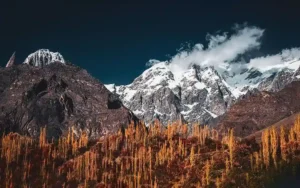
The Katpana Desert, also known as the Skardu Cold Desert, is one of the most beautiful and enchanting deserts in the world and is situated in the Gilgit-Baltistan region of Pakistan. It is a cold desert located at about 7,303 feet or 2,226 metres above sea level, and thus, it will be considered one of the world’s highest deserts where the Skardu desert is different because the dunes are golden and rise out of the backdrop of snow-capped mountains, which gives a surreal feeling to the environment. The Katpana desert is an excellent opportunity to be in the desert area where temperatures are below freezing point, unlike other deserts in other parts of the world.

The Katpana Desert is defined by the large sand dunes that occupy a relatively large space close to the Skardu city. The dunes are made up of fine, light-coloured sand that gleams in the sun. Not like the typical desert where the heat is almost unbearable, the Skardu Cold Desert has another story to tell with regard to climate. The winter season goes down to -10 °C (14 °F), which makes the sand dunes to be capped by frost, thus giving the desert a particular look.
The nature of the desert is further enhanced by the surrounding environment topography and features. The Katpana Desert is bordered by some of the world’s highest mountains including the Karakoram Range – the second tallest mountain in the world being part of this range, K2. The Skardu Desert is therefore unique in that it has towering mountains immediately adjacent to flat and undulating sand dunes.
The Katpana Desert is not only a geographical feature that the communities can be proud of but also has cultural and historical values. The inhabitants of the Skardu have a historical link with the land, which many of them depend on to pasture their animals. The people of the region used to migrate with their livestock and had to cross places such as the Skardu Cold Desert.
Today, however, there is still a strong reverence for the natural environment despite the fact that the local economy has become more diversified and the cultural identity of the region has become more developed. In addition, it has always been involved in trade and journeys from ancient times. This area lies near the old Silk Road, a great trade artery of the East and the West.
It is noteworthy that merchants and travellers had to cross the problematic territory around the Katpana Desert to reach various points of Central and South Asia.
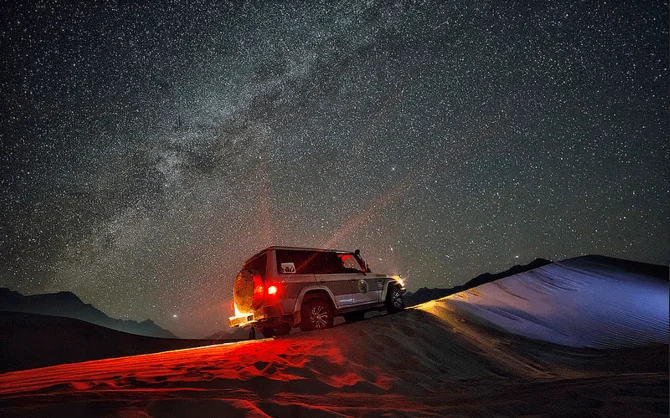
The best time to visit the Katpana Desert depends on the climatic conditions that are experienced in the region at different times of the year. The climatic condition is best experienced between April and October when the heat is a little bearable while exploring the features of the desert. During these months, the max temperature of the day is between 8°C to 25°C (46°F to 77°F), which is perfect weather for camping, trekking and photography. The sand dunes glisten under the hot sun, while the snow-capped mountains on the horizon are an interesting foil.
During spring and early summer, flowers grow, especially in the surrounding land, making the place colourful despite the rocky terrain. This period also marks the tourism season in Skardu since tourists worldwide visit the area to experience various natural features, such as the Skardu Cold Desert. It also creates time for many travellers to go on tour to other sites of interest within the country, such as Deosai National Park and Shangrila Lake.
Travellers are advised against visiting the desert during winter, especially from November to March, as the heat intensifies and the desert experiences frost and snow. However, for the adventure freaks who want to get a feel of the tough and icy desert climate, winter is the right time to get it. Due to the freezing temperatures, the Katpana Desert changes its appearance almost beyond recognition as sand dunes glisten with frost in the manner of polar regions.
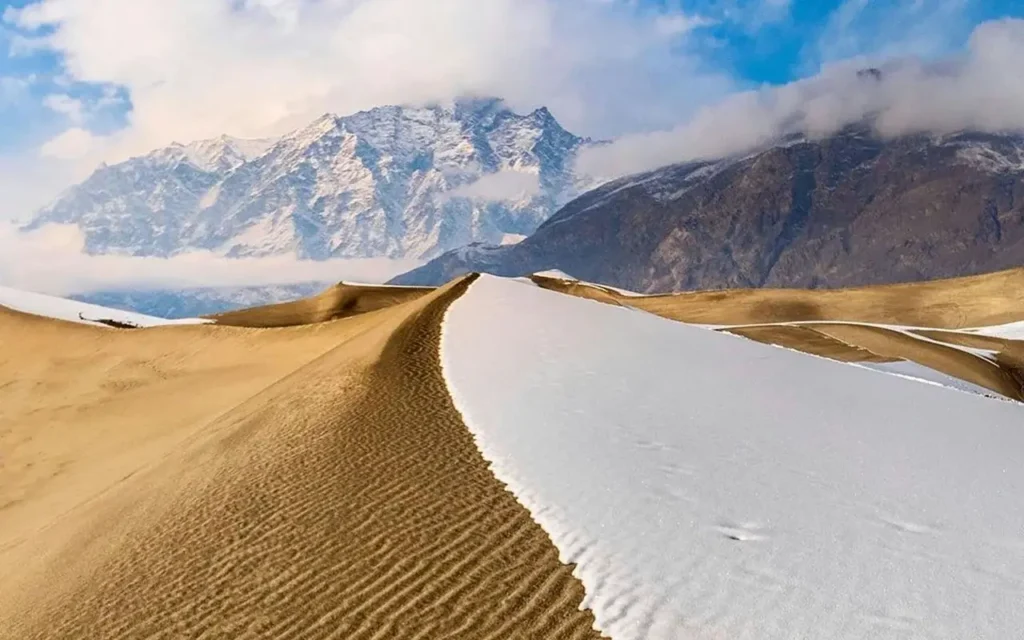
The Skardu to Katpana Desert distance is a short distance, so it can be visited by anyone who is in Skardu city. The desert is about 10 kilometres (6.2 miles) away from the main town of Skardu. This short distance enables people to get to the desert easily within a 15-20 minutes’ drive. Due to its ease of access from Skardu the Katpana Desert has become one of the main attractions for every tourist visiting the Gilgit-Baltistan province.
Local transport like jeeps and taxis can be hired for travelling to the desert and the road too is quite scenic with valleys and mountains around it. The journey from Skardu to Katpana Desert is through green mountains to desert where sand dunes are the dominant feature. The roads are beautiful and there are many places that one is able to pull over to take pictures and capture the spirit of the area.
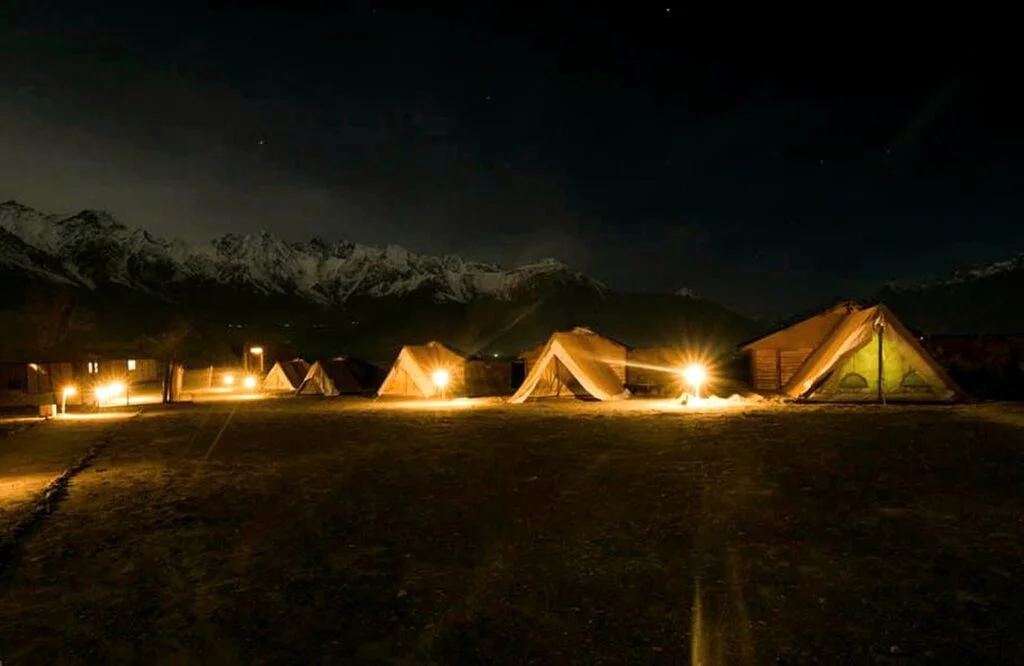
The Katpana Desert has able to provide a wide range of activities that every visitor will be able to find something to enjoy whether individual are an adventure freak, a wildlife enthusiast, or just a lover of nature. Some of the most common activities include sand dune bashing this is whereby some vehicles are driven across sand dunes to experience an exciting ride that looked like a rollercoaster.
Another enjoyed activity is camping, for many visitors pitch tents to spend a night at the Skardu Cold Desert, where the sky is clear and studded with stars at night.
There is no influence of artificial light in the area, and the area provides a clear view of the sky at night, which is perfect for astronomical observation. As the Katpana Desert is a place of outstanding scenic beauty, lovers of photography will surely enjoy the trip, as there are many interesting subjects to photograph. The perfect light and shadow features on the sand dunes, together with the mountains far away, the rising and setting sun, and the fluctuating weather, make it one of the best locations for photography.
Most other tourists can also travel further afield to visit other attractions, such as Satpara Lake, which is about 15 kilometres (9.23 miles) away from the desert and which attractions include boating and fishing, among others.
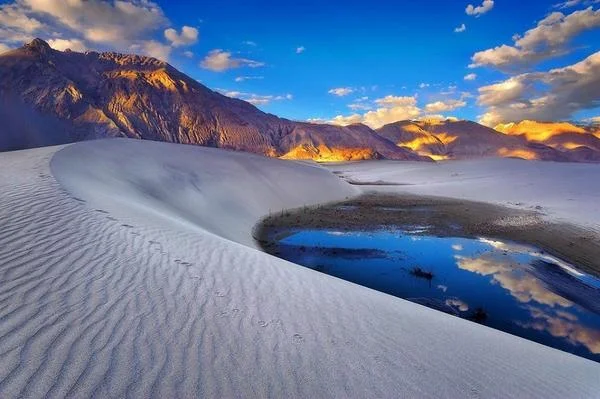
The Skardu Desert is a cold desert, and it still has the capability to sustain plant and animal life that is suitable for the climate. Vegetation cover is limited to small shrubs, grass and small thorny shrubs that are well adapted to the hot and dry conditions that are characteristic of this region. They serve as a cheque on soil erosion and balance the environment of the region where the plants grow.
Wildlife in the Katpana Desert is scarce but there are certain kinds of animals that are able to survive the frigid and arid climate. Some of the small mammals include hares, rodents etc. while some of the birds which are common to this area include.
At times, even much larger animals like the Himalayan ibex or the snow leopard can be seen living close to the desert, such animals, however, move to the lower altitude areas during the winter season in search of food.
Measures to conserve the Katpana Desert and the features of the climate of the region have been intensified only recently. Various NGOs and the government of Gilgit-Baltistan have taken the responsibility to minimise the negative impact on the balance of the desert.
Some of the measures include promoting practises that are friendly to the environment and which do not in any way affect the physical environment around the area of tourism, this in turn educating the visitors on the importance of conservation of the physical surrounding environment.
Because of the proximity of the desert to Skardu area and touristic significance of the desert, it becomes imperative to regulate the flow of people to the area so that the beauty of the Skardu Cold Desert could be preserved for the next generations.
The Katpana Desert is a natural geographical landmark that is a unique desert and mountain climate that cannot be seen anywhere else in the world and therefore should not be missed to be seen. It being one of the highest cold deserts, it is a perfect region that avows sight of sand dune and snowy peaks simultaneously. Meanwhile, the Skardu Desert in addition to being an aesthetic value for the tourists is historical and cultural for the inhabitants of the area.
The best time to visit Katpana Desert is between April and October but the brave hearted can visit the place during winters and enjoy the cold desert. The Skardu and Katpana Desert distance is not very large and that is why it is a favourite place for tourists.
If the conservation programmes are continued, the Katpana Desert will remain a natural reserve for tourist to visit and have a look of one of the wonder of the world and the coldest desert in the world.